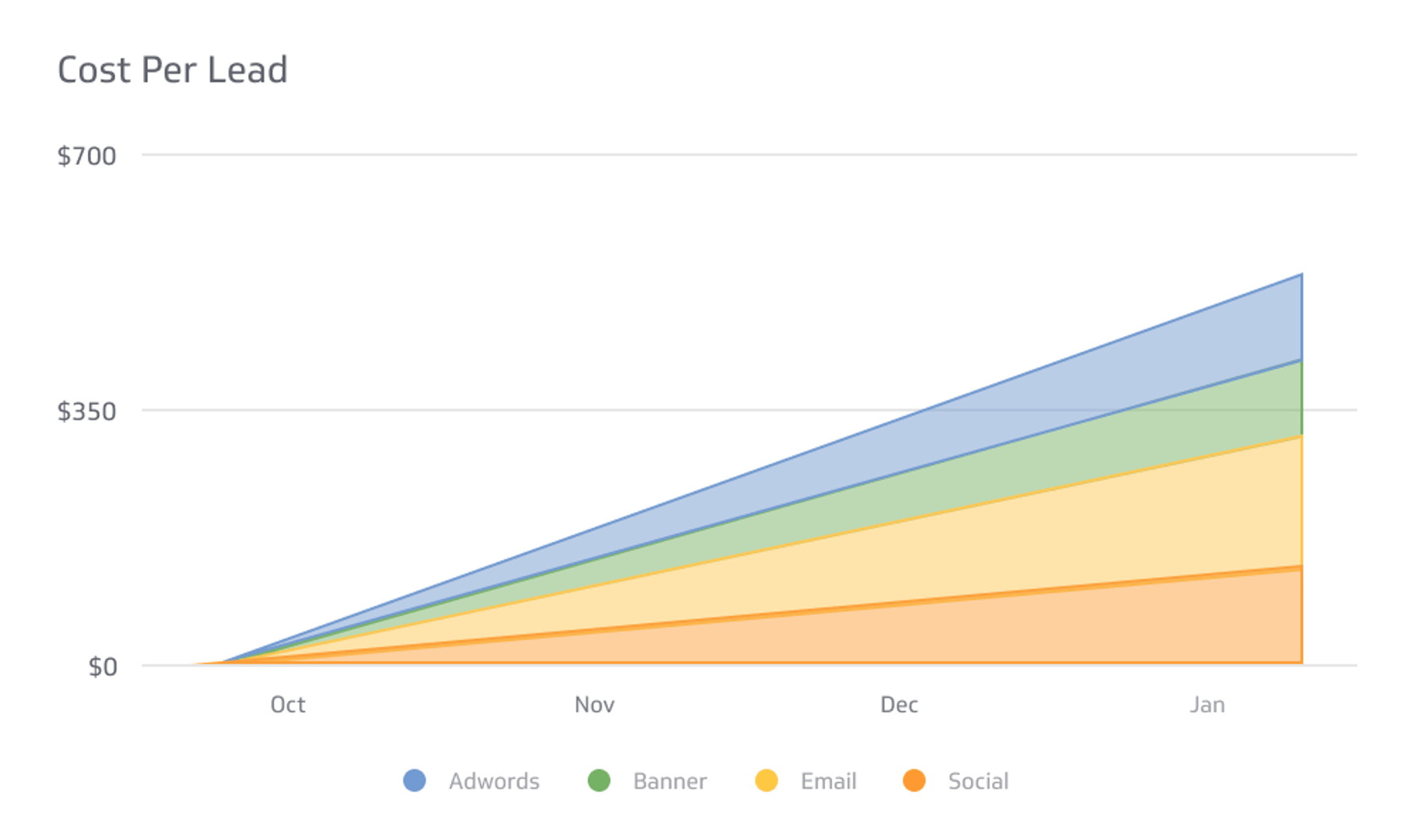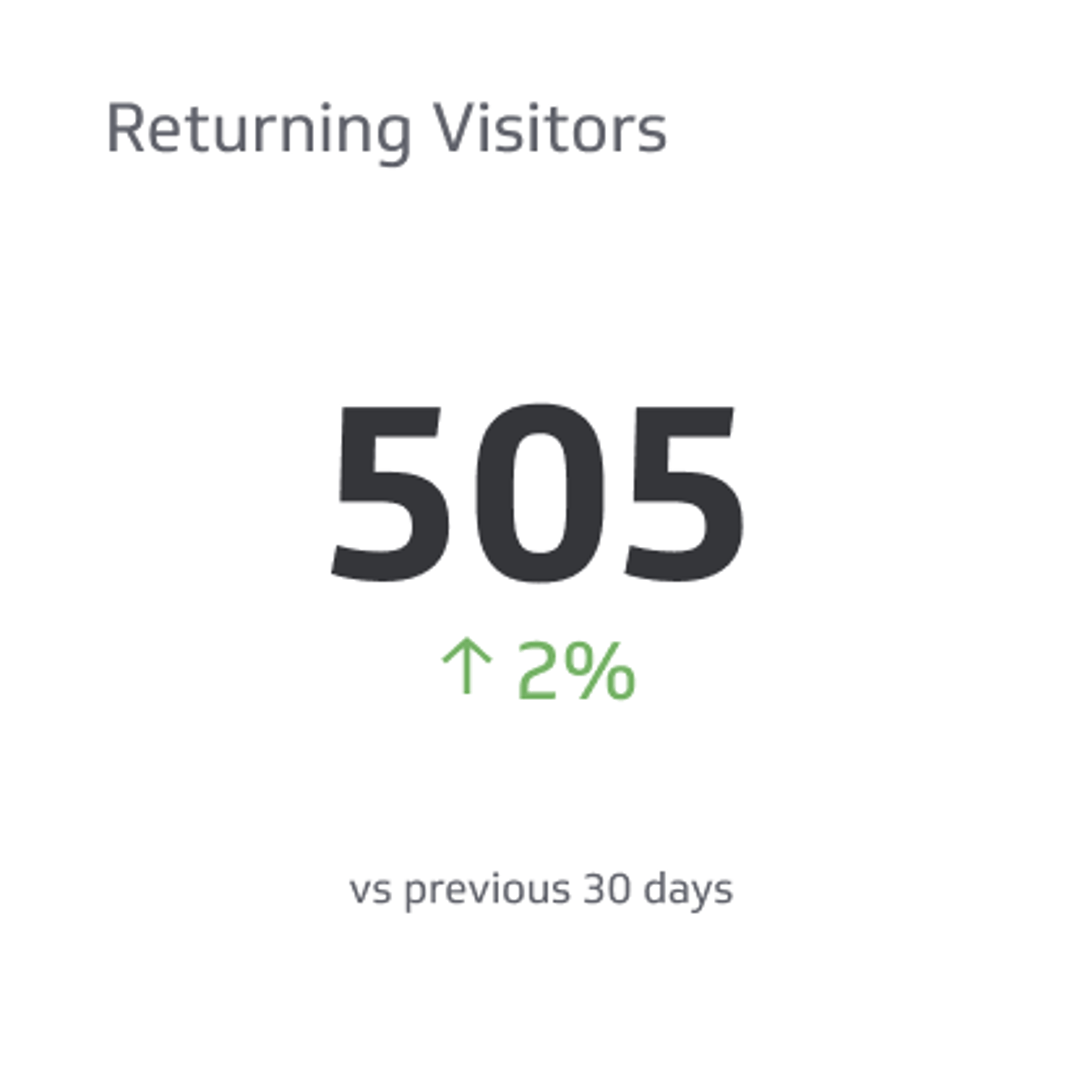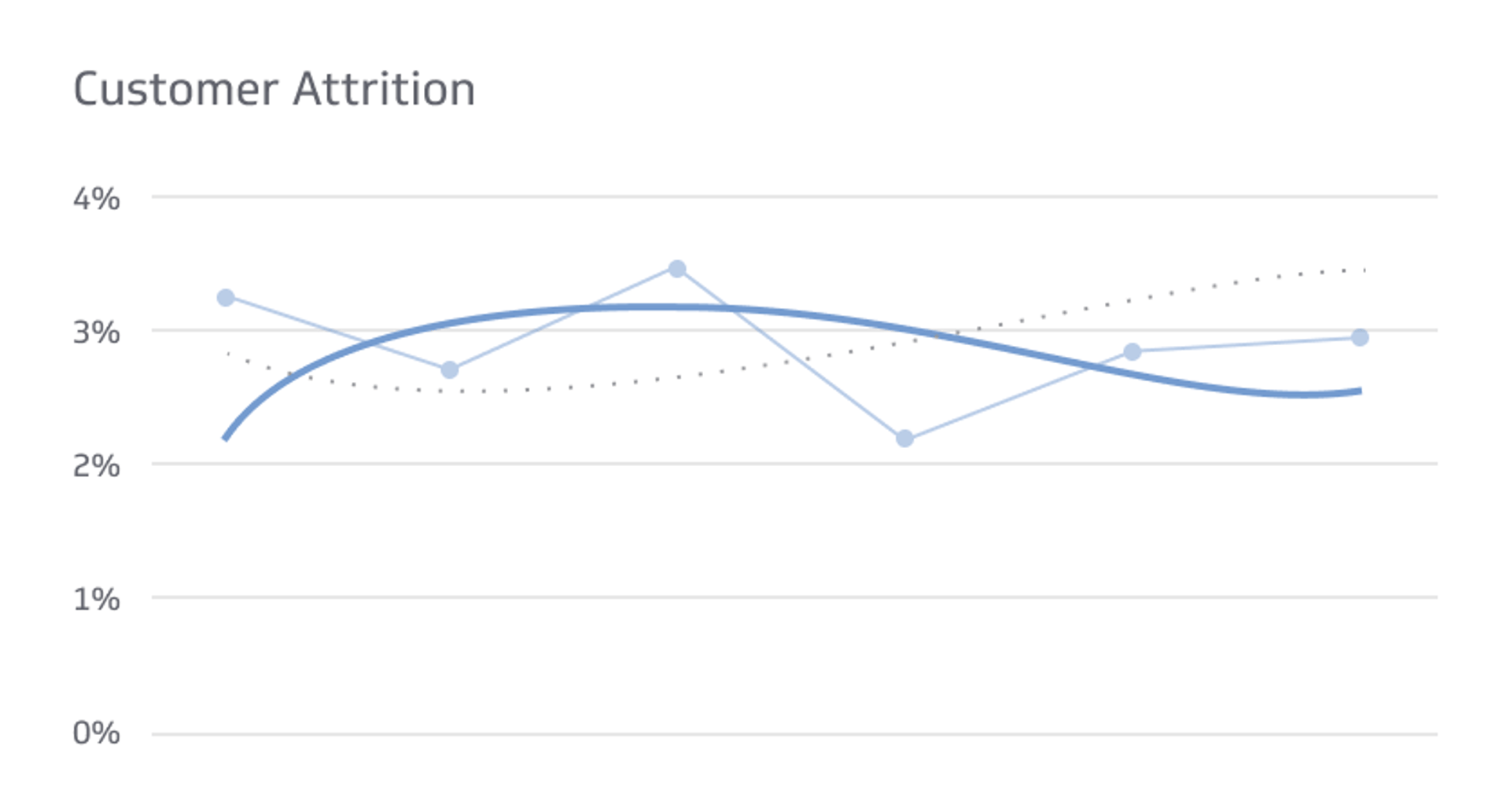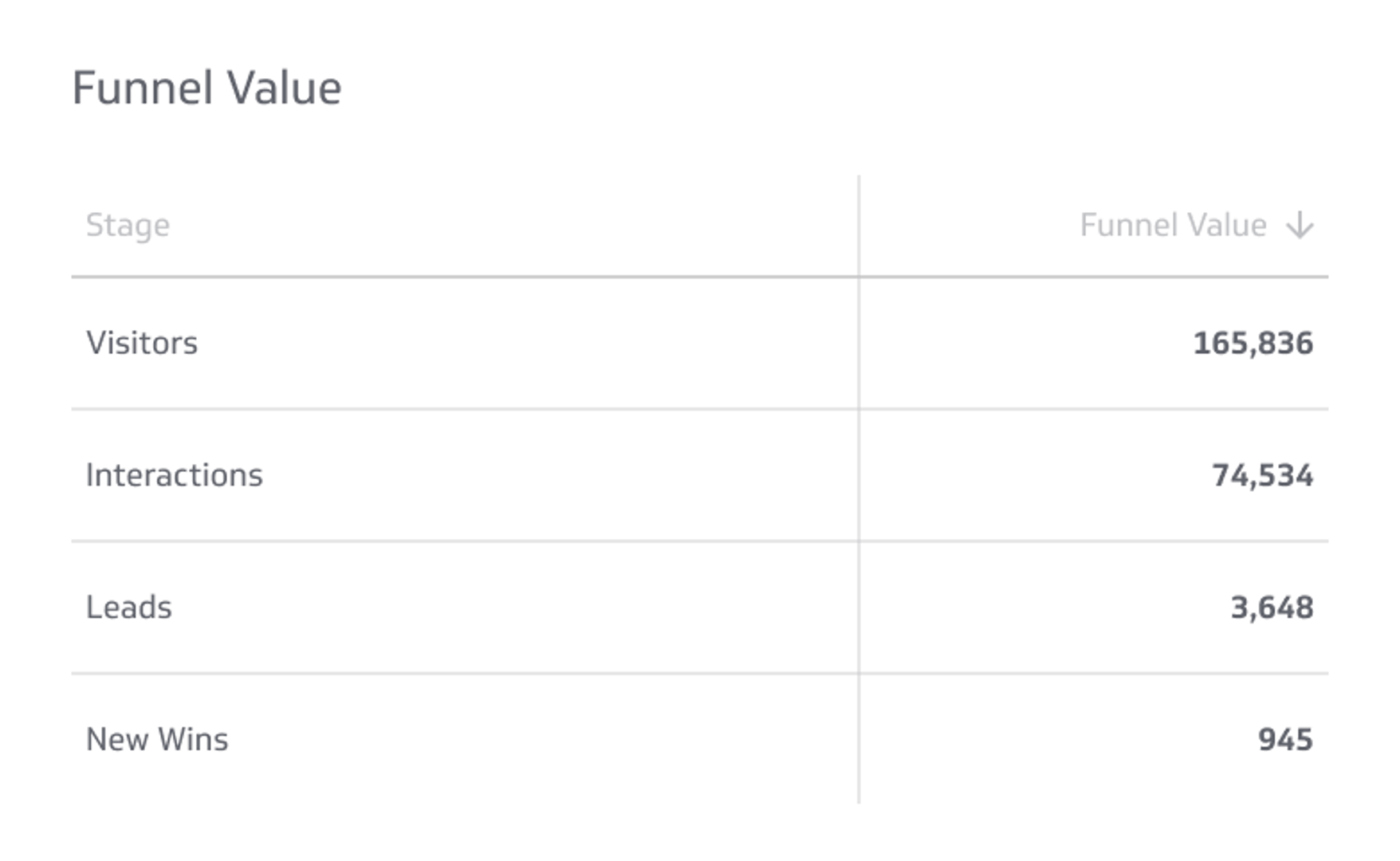Cost Per Lead (CPL)
Measure the cost-effectiveness of marketing campaigns.
Track all your Digital Marketing KPIs in one place
Sign up for free and start making decisions for your business with confidence.

Tracking the right metrics is essential for optimizing your marketing efforts. One critical metric is cost per lead (CPL), which measures the efficiency of your campaigns by quantifying how much you spend to generate customers.
For marketers and business owners, CPL delivers many insights into the effectiveness of advertising strategies. In addition, it helps locate areas for improvement that you can immediately work on.
Let’s explore the importance of CPL, how it’s calculated, and why it is a cornerstone of successful marketing.
What is cost per lead (CPL)?
A lead is someone who has expressed interest in your products or services by completing an action like filling out a form, subscribing to a newsletter, or downloading a resource. Cost per lead (CPL) calculates the cost of acquiring a lead through marketing campaigns. It’s a crucial measure of how effectively your marketing budget is utilized to generate interest from potential customers.
Cost per lead examples
- Social media advertising: A fitness brand runs a Facebook campaign offering a free workout guide. The campaign costs $1,000 and generates 200 downloads, resulting in a CPL of $5 ($1,000 ÷ 200 leads).
- Pay-Per-Click (PPC) campaigns: A real estate agency invests $3,000 in Google Ads to generate leads for homebuyers. The campaign brings in 150 inquiries from potential clients. The cost per lead is $20 ($3,000 ÷ 150 leads).
- Email marketing: An SaaS company spends $500 creating and distributing an email campaign offering a free product trial. Twenty-five users sign up for the trial, making the cost per lead $20 ($500 ÷ 25 leads).
- Event marketing: A business spends $2,500 on hosting a webinar, including promotion and platform costs. The webinar attracts 100 attendees who sign up in advance. The cost per lead is $25 ($2,500 ÷ 100 leads).
- Influencer marketing: A skincare brand collaborates with an influencer, paying $2,000 to promote a free skincare consultation. The campaign generates 400 consultation sign-ups, resulting in a cost per lead of $5 ($2,000 ÷ 400 leads).
- Content marketing: A B2B company spends $800 producing a whitepaper and uses LinkedIn ads to promote it. Forty professionals download the resource, making the cost per lead $20 ($800 ÷ 40 leads).
CPL vs CPA (Cost Per Action)
While CPL focuses on the cost of acquiring leads, CPA (cost per action) measures the cost associated with a specific, predefined action, such as a sale, subscription, or app download. The primary difference lies in what the metric tracks: CPL evaluates the early stages of the customer journey, while CPA usually reflects the final stages, which are closer to conversion.
For example, if your business spends $2,000 to generate 100 leads, its CPL is $20. However, if only 10 of those leads make a purchase, the CPA would be $200 ($2,000 ÷ 10 actions).
CPL is ideal for campaigns focused on building a pipeline of potential customers, whereas CPA is better suited for evaluating the cost of securing completed transactions. Understanding both metrics helps you refine marketing strategies, gauge success at every stage of the funnel, and improve return on investment.
Cost per lead formula
Calculating cost per lead (CPL) is straightforward and helps you determine the efficiency of your marketing campaigns.
The formula is:
CPL = Total Campaign Cost ÷ Number of Leads Generated
CPL is made out of two parts:
- Total campaign cost: This includes all expenditures associated with your campaign. These costs range from ad spending and software subscriptions to creative production and agency fees. For instance, if you spent $1,500 on Ads and $500 on design assets, your total campaign cost is $2,000.
- Number of leads generated: This is the total number of people who took the desired action, such as filling out a form, subscribing, or requesting a demo. Leads must be accurately tracked using tools like Google Analytics, CRM platforms, or ad platform reports.
The formula provided gives you the average cost of acquiring a single lead. To use it effectively, you need to monitor your total campaign spend and the number of leads developed during your campaign.
What is a good CPL?
A “good” cost per lead (CPL) depends on your industry, target audience, and objectives. A CPL of $20–$50 may be reasonable for SaaS companies, whereas an e-commerce business might aim for $5–$15. While benchmarks vary widely, focusing on reducing CPL is essential for maximizing your marketing budget.
Industries like finance or real estate typically have higher customer lifetime values, which can justify higher CPLs than retail or e-commerce businesses. The key is ensuring your CPL fits within your customer acquisition cost (CAC) goals while leaving room for a fruitful return on investment (ROI).
Common causes of high CPL and how you can lower It
High cost per lead (CPL) can drain your marketing budget and make it difficult for you to achieve a profitable return on investment. To run more cost-effective campaigns, it’s important to identify and address the root causes of high CPL.
This guide breaks down the most common reasons behind high CPL and provides actionable measures you can take to optimize your campaigns:
Targeting the wrong audience
Reaching individuals who are not genuinely interested in your products or services can cause your CPL to spike. Broad or poorly defined targeting often leads to clicks from individuals who are unlikely to convert.
Additionally, targeting an audience that’s too large or too diverse can dilute the effectiveness of your campaigns, wasting ad spend on people who are less likely to take action. Poor audience segmentation, such as failing to distinguish between new prospects and repeat customers, can also contribute to higher costs.
What you can do:
- Dive deep into your customer data to refine your audience. Identify the characteristics of your highest-value customers and build your campaigns around them.
- Use tools like Google Analytics or Facebook Audience Insights to pinpoint the demographics, interests, and behaviors of your best leads.
- Test different audience segments to determine which ones deliver the best performance. Start with narrow, highly targeted campaigns and gradually expand once you’ve identified high-performing groups.
- Consider leveraging lookalike audiences based on your existing customers to reach people who share similar traits.
- Regularly review and update your audience targeting to ensure it aligns with your current business goals and market trends.
Ineffective ads
Ads that don’t grab attention or effectively communicate your value proposition will lead to low engagement and higher costs. Bland visuals, weak copy, or irrelevant messaging can cause users to ignore your ads, resulting in wasted impressions and significantly fewer conversions.
Furthermore, ads that fail to address customer pain points or highlight unique selling points (USPs) often struggle to resonate with the intended audience.
What you can do:
- Create visually compelling ads with high-quality images or videos that capture attention within the first few seconds. Use bold headlines, contrasting colors, and clear visuals to stand out.
- Tailor your ad copy to address your audience’s needs and challenges. Highlight the specific benefits of your product or service and how it solves their problems.
- Include a strong CTA that encourages users to take immediate action, such as “Sign Up Now,” “Get Your Free Trial,” or “Learn More.
- Test various ad formats, such as carousel, video, and static image ads, to determine what works best for your audience.
- Analyze ad performance metrics like click-through rates (CTR) and conversion rates regularly to identify underperforming creatives and optimize them accordingly.
A poor landing page
Even the most effective ads can’t deliver results if your landing page fails to convert visitors. Issues like slow load times, cluttered designs, or confusing navigation can discourage users from completing the desired action. Landing pages that don’t align with your ad’s message or fail to provide clear value can create a disconnect, leading to higher CPL.
What you can do:
- Optimize your landing pages for speed and mobile responsiveness. Use tools like Google’s PageSpeed Insights to identify and address performance issues.
- Ensure the landing page design is clean, visually appealing, and easy to navigate. Avoid overwhelming users with excessive information or distracting elements.
- Align the messaging and visuals of your landing page with your ad. For example, if your ad promises a free guide, make sure the landing page prominently displays the offer and provides a straightforward way to access it.
- Streamline the form process by only asking for essential information. Too many fields can deter users from completing the form.
- Build trust by including social proof elements like customer testimonials, case studies, or trust badges.
- Use A/B testing to experiment with different headlines, layouts, and CTAs to determine what drives the most conversions.
Overly broad campaigns
Campaigns with overly broad settings, such as targeting all age groups, devices, or locations, often result in irrelevant clicks and wasted ad spending.
A lack of specificity in targeting can dilute the relevance of your ads, reducing their overall effectiveness. Besides that, broad targeting can lead to increased competition for ad placements, driving up your expenses without delivering any quality leads.
What you can do:
- Narrow your targeting to specific demographics, interests, or behaviors that align with your ideal customer profile.
- Analyze past campaign data to identify the most profitable age groups, geographic locations, and devices. Use this information to refine your targeting.
- Break down your campaigns into smaller, more focused ad groups to tailor messaging and optimize bids for each segment.
- Implement dayparting strategies to show ads when your audience is most active and likely to convert.
- Review your targeting settings and adjust based on performance metrics and market trends.
Not using retargeting
If you’re not retargeting users who have already interacted with your brand, you’re likely overspending on cold leads who require more effort to convert.
Retargeting allows you to re-engage potential customers who are already familiar with your brand, increasing the likelihood of conversion while reducing acquisition costs.
What you can do:
- Set up retargeting campaigns to re-engage users who visited your website, viewed specific products, or interacted with your ads.
- Use dynamic retargeting to display personalized ads featuring the exact products or services users have shown interest in.
- Offer incentives like discounts, free trials, or exclusive resources to encourage retargeted users to take the next step.
- Exclude users who have already converted to avoid wasting ad spend on audiences who’ve completed the desired action.
- Monitor retargeting performance and adjust your strategies to ensure they remain cost-effective and relevant.
Poor budget allocation
Allocating too much budget to low-performing campaigns or failing to invest in top-performing ones can drive up your CPL. In addition, a lack of consistent monitoring and optimization can result in wasted spending and missed opportunities to maximize ROI.
What you can do:
- Regularly review campaign performance metrics to identify high-performing and low-performing campaigns.
- Shift budgets from underperforming campaigns to those delivering the best results.
- Use automated bidding strategies, such as Target CPA or Maximize Conversions, to optimize budget allocation across campaigns.
- Set daily or lifetime budget caps to prevent overspending and ensure your funds are used efficiently.
- Test different budget levels to find the sweet spot for each campaign.
Lack of A/B testing
Running campaigns without testing variations can lead to missed opportunities for optimization. Without A/B testing, it’s challenging to identify which elements of your ads or landing pages are driving results and which are underperforming.
What you can do:
- Test different ad creatives, headlines, copy, and CTAs to determine what resonates best with your audience.
- Experiment with landing page designs, layouts, and form fields to optimize conversion rates.
- Conduct tests on audience segments, targeting settings, and bidding strategies to identify the most cost-effective approaches.
- Use statistical analysis to ensure your tests are yielding reliable results before making changes.
- Implement a culture of continuous testing and improvement to keep your campaigns optimized.
Inefficient bidding strategies
Using outdated or inappropriate bidding strategies can result in wasted ad spend and higher CPL. Manual bidding without a clear understanding of performance metrics can lead to inefficiencies and missed opportunities for cost savings.
What you can do:
- Review and update your bidding strategy to align with your campaign goals. For example, use Target CPA bidding for lead generation campaigns or Maximize Conversions for broader awareness efforts.
- Leverage automated bidding tools to optimize real-time bids based on performance data.
- Adjust bid modifiers for devices, locations, or times of day to ensure your budget is spent where it’s most effective.
- Monitor your CPC and conversion rates to identify areas where bid adjustments may be needed.
- Regularly review bidding performance and make adjustments based on campaign outcomes.
Lower your CPL without sacrificing quality
Cost Per Lead (CPL) is a powerful metric that provides valuable insights into the efficiency of your marketing efforts. By measuring how much you’re spending to acquire each lead, CPL helps you understand whether your campaigns are yielding a good return on investment. A low CPL often indicates that your marketing strategies are effective; meanwhile, a high CPL signals areas that may need optimization.
However, optimizing your CPL requires constant analysis and adjustments. This means refining your target audience, improving your ad creatives, and making sure that landing pages are optimized for conversions. By regularly observing CPL, you can make the necessary tweaks that ultimately lead to more qualified leads at a lower cost, improving your overall marketing effectiveness.
Platforms like Klipfolio provide real-time dashboards that allow you to visualize and analyze your marketing data to track CPL and other key performance indicators easily. This actionable insight lets you fine-tune your strategies and drive better results.
Related Metrics & KPIs



